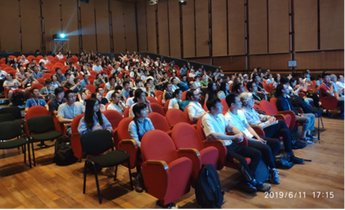|
By Ekaterina Dobryakova Brain mapping techniques are a key tool for understanding the pathophysiology underlying neurological and psychiatric conditions. In this interview we interviewed leading clinically-focussed neuroimagers to find out about the state-of-the-art in applications of MRI techniques in people with multiple sclerosis (MS). Actress Selma Blair recently discussed her personal and very emotional struggle with MS with the world, shining a spotlight on this disorder. According to recent estimates, up to 1 million adults in the United States alone have a diagnosis of MS, a neurodegenerative inflammatory disease that diffusely affects the central nervous system.
While MS cannot be diagnosed using neuroimaging alone, magnetic resonance imaging (MRI) tools are widely used by clinicians who treat individuals with MS and by researchers who study aspects of MS progression, symptoms, and rehabilitation. The MRI approaches used to study MS vary from the more ‘standard’ and long-standing techniques to new ones that are still undergoing development. Neuroimaging research contributes a great deal to understanding various aspects of MS, from cognitive impairment, brain plasticity, to changes not only in the brain but in the spinal cord.
2 Comments
 By Ning-Xuan Chen The 3rd Annual Event of Chinese Young Scholars for OHBM was held on June 11th, during the 2019 OHBM Annual Meeting in Rome. This continued the success from the two previous meetings in Vancouver and Singapore. The theme for this year’s event was “China Roots, Global Impact!” Around 100 young scholars from universities around the world participated. By Roselyne Chauvin
After the success of the first Australian chapter meeting and the announcement of the OHBM publishing platform Aperture in 2018, the OHBM communications committee took the opportunity to meet Michael Breakspear in Rome to get to know more about brain mapping developments in Australia as well as the progress of The OHBM Publishing Initiative Committee (TOPIC). |
BLOG HOME
Archives
January 2024
|
 RSS Feed
RSS Feed